
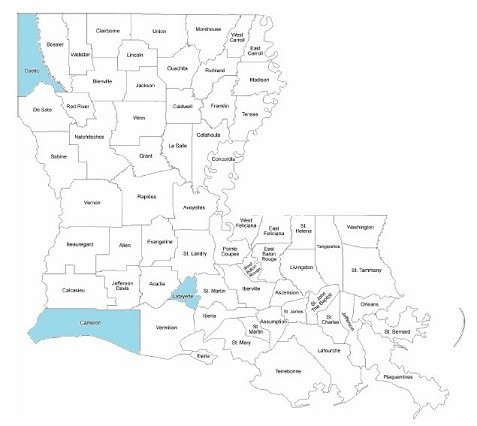


One immature female (1983-09; formerly 1984-019) found at Holly Beach, Cameron Parish, on 17 December 1983 (Van Remsen; David Muth*) and collected the following day (LSUMZ 113128) after being seen by many observers. A surprising first Louisiana record, and the first U. S. record away from southern Texas.
One immature male (1988-60; formerly 89-60) on 22 Oct. 1988, Cameron: ca. 5 mi. E Cameron; Steven W. Cardiff (LSUMZ #138250), Donna L/ Dittmann (Muth 1989, p. 119).
One adult male (1989-01) on 18 Dec 1989, Cameron: Oak Grove, Rutherford Motel on Hwy. 82; Robby J. Bacon and Melvin Weber; AB44(4):1023.
One adult male (1992-04) from 10-28 Feb. 1992, Lafayette: Lafayette, 800 block of S. College Road,
woods at Belle Rive Townhomes; Dave Patton, Roger J. Breedlove, Curtis A. Marantz, Alfred E.
Smalley, and Paul E. Conover (ph) (AB 46(2):278; LOS 147).
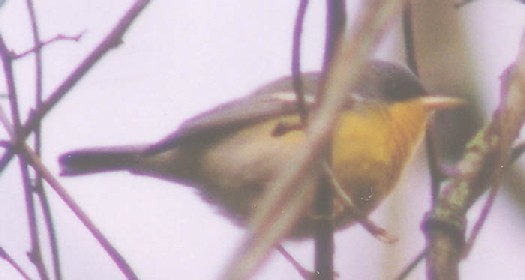
Photo by P. Conover
One male (1999-77) from 27 Nov-19 Dec 1999, Caddo: Shreveport, Cross Lake, 2414 Lakecrest Drive; Chuck and Sally Moffett, Charles E. Lyon, Terry Davis, Karen Fay, and M. Mark Swan (ph taken 27 Nov); NAB 54(2): 189.
One (2001-55) on 22 Dec 2001, Cameron: Johnsons Bayou, 100 yards W of Peveto Beach Woods, 3 mi. E of Johnsons Bayou School; Malcolm Mark Swan (ph); NAB56(2):185. These two records were accepted; however the LBRC will re-review accepted records of this species because of occurrence of apparent Tropical X Northern parula hybrids, including a previously accepted Louisiana specimen record. Observers who encounter this species should make every attempt to obtain good photographs so that genetic �purity� can be better evaluated.
One (2007-089) on 27 December 2007-1 January 2008, Lafayette: ca 3.2 km N Milton; Erik I Johnson (ph) and Dave Patton (ph only).
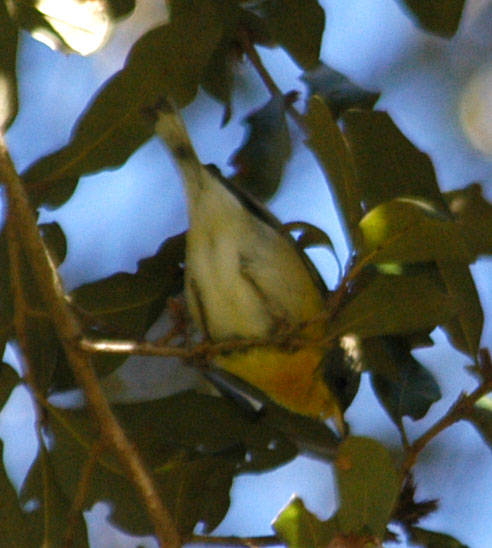
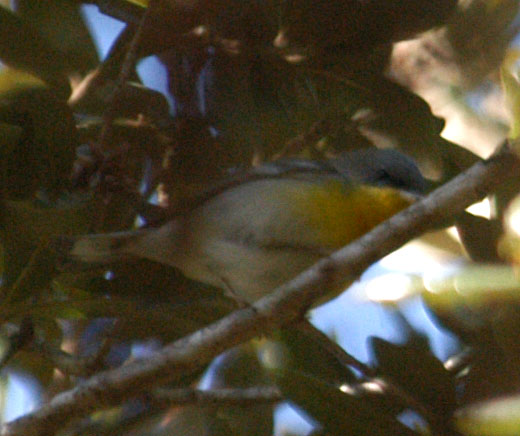
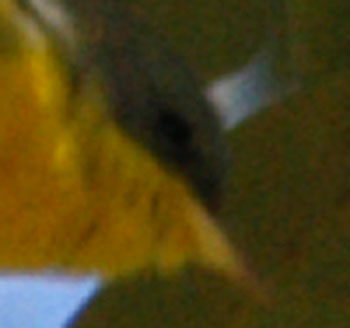
Photo by Erik Johnson
One immature male (2023-099) on 30 December 2023, Lafourche: Hwy. 307 in Kraemer; Erik I. Johnson (ph).
Excellent photographs allowed Members to examine the bird closely for signs of hybridization with Northern Parula, a known issue with many previous Louisiana reports of Tropical Parula. Although the observer expressed minor concerns with possible pale feathering below one eye, the paler feather appears blue under close study and seems more likely to be the result of light than a pale feather. The observer also expressed concerns with the greenish wash on the crown, a feature he did not note in review of photos from elsewhere in Tropical Parula range. However, one Member stated finding a photo taken in Mexico City of a similar individual. The observer, an expert in molt, aged the bird as an immature based on retained juvenile feathering, so the greenish crown may simply be a holdover of juvenile plumage. Members felt this bird looked most consistent with pure Tropical Parula.
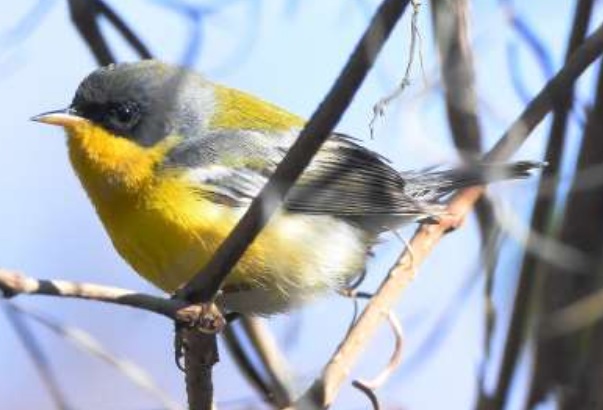
Photo by Erik I. Johnson
One presumed first-year male (2011-109) on 10 November 2011, Cameron: Hackberry Ridge, 2 mi. WSW of Johnsons Bayou School. This individual was thought to be an immature male based on green crown and orange wash across the breast. Scrutiny of the excellent series of photographs revealed several characters inconsistent with a pure immature male Tropical Parula, including white that formed �lower� eye arcs, pale lores, and no black or dusky in the face, as well as a pale arc of yellow under the cheek. All these characters may better support identification as a Tropical X Northern parula hybrid.
One male (2013-093) on 26 December 2013 and 1 January 2014, Cameron: Peveto Woods Sanctuary. This bird, which otherwise was consistent with a male Tropical Parula, showed some white on the eye lids that was suggestive of hybridization with Northern Parula. Because it could be argued that the bird was not 100% Tropical Parula, a majority of Members thought it best to not accept the report. It should be pointed out that had photos not been obtained or had the photos not showed such detail, then this bird could well have been accepted as a Tropical Parula. Because of this, the LBRC wants to stress that any suspected Tropical Parula needs to be extensively photographed in order to exclude hybrids/intergrades.
One male (2017-004) on 22 January-5 March 2017, Lafayette: Lafayette, Austin Village South subdivision;
Patricia Rosel and Scott France (ph; also see: https://ebird.org/gbbc/view/checklist/S34814377). This record was submitted as and accepted as a Tropical X Northern Parula.
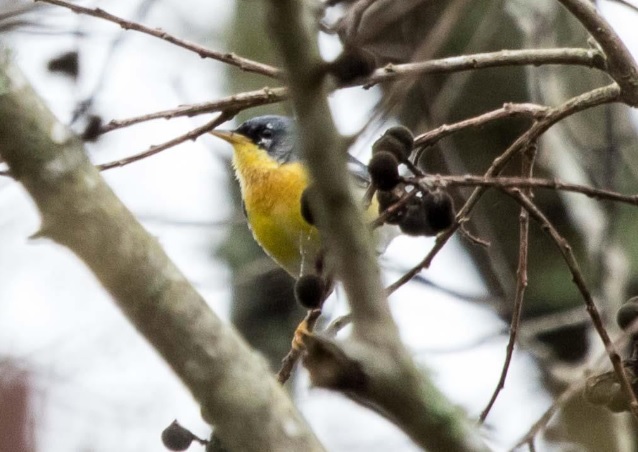
Photo by Patricia Rosel and Scott France
One immature male (2019-009) on 13 January 2019, Vermilion: Veazey Road X Freshwater City Road;
Phillip A. Wallace (ph), Paul E. Conover (LSUMZ), and Donna L. Dittmann (DLD 11560). This record was submitted as and accepted as a Tropical X Northern Parula.
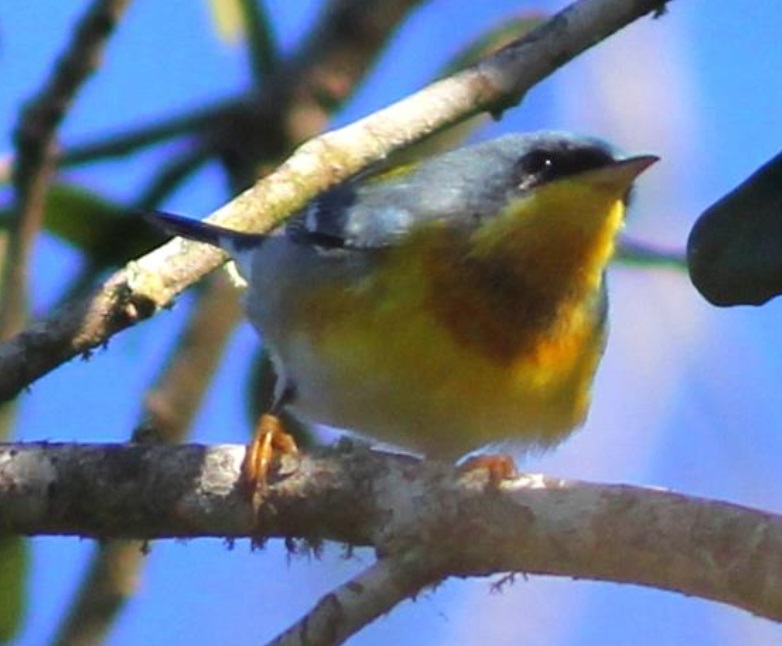
Photo by Phillip A. Wallace
One adult male (2023-058) on 8 October 2023, Cameron: about 3km east of Grand Chenier, St. Martin de Porres Cemetery. This observation was brief and the only photo was of suboptimal quality. The identification of Tropical Parula versus putative Tropical X Northern parula hybrids requires extremely good looks as signs of hybridization, such as the presence of white feathering around the eye, can be very difficult to detect. In some cases, white feathering is asymmetrical and restricted to a single feather. Given the active feeding style of parulas, it is very difficult to manage the types of looks necessary to see such minute details.